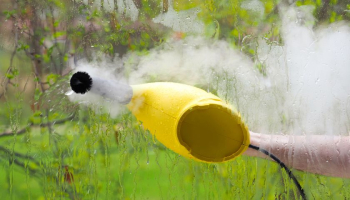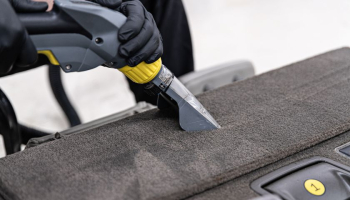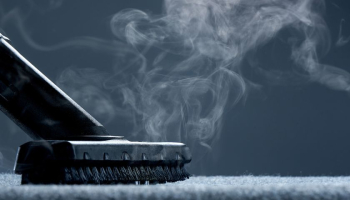How to Attach a Swiffer Wet Pad? [Learn to Do It Correctly]

Attaching a Swiffer with a wet pad may seem difficult since it requires following many instructions. It might not be easy at first attempt. But as time progresses, the process begins to be easy for you. First, you should learn how to attach a Swiffer wet pad correctly.
Swiffer is generally made with 4-types of rubber grippers. These grippers work to cinch both dry and wet mop pads. It holds these pads in one spot during the mop time. Besides, mop pads can be easily pulled out of the grippers at the end of the task.
There are other ways to attach a mop pad with a mop. There are more things to consider while doing the task.
Contents
How to Attach Swiffer Wet Pad – 7 Steps to Follow
Follow these overall steps to the attached Swiffer wet pads gradually. Try to mimic all of them as far as possible.
Step 1: Gather All the Necessary Tools
Try to gather all the essential tools you need for the job. Usually, take the garments, clothes, or pad you want to attach with the mop.
Make a cleaning solution to clean the floor as well as the duster of the cleaning machine. You can gather a rope that helps you tie the joint of the machine fabric properly.
Step 2: Assemble the Pole of the Handle
One of the most challenging parts of attaching a mop pad with its upward part is adjusting the proper alignment. If you want to stick loose garments to it, ensure the mop handheld is perfectly placed.
In addition, look at the backside of the green cover of Swiffer. Check the basement to ensure that it is positioned securely or not.
Step 3: Wash the Long Duster of the Pad
Swiffer mop handle usually comes with a duster that requires germ-free cleaning. While cleaning the duster, first start with the nuts. Unscrew the nuts one by one from the duster. Then, prepare a cleaning solution to wash off the duster appropriately.
Avoid using harsh chemical products over the duster as it may ruin the metallic finish. Choose any mild cleanser that helps you to remove the dirt gently.
Prepare a few drops of detergent or dishwashing liquid with warm water. Soak the duster into that mixture. Ensure the duster is clean before attaching any rag, pad, or clothes. As you’re done, now move to the next steps.
Step 4: Refill the Dry Duster
After finishing the work, leave the duster to air to dry properly. Otherwise, it will not let you do the cleaning job later. It may take about half an hour to dry out the duster properly. Therefore, wait and leave it to prepare on its own.
Afterward, refill the duster and tighten the nuts. Later on, let them sit together.
Step 5: Put the Swiffer Pad / Cloth / Rag on a Flat Surface
After unboxing the Swiffer mop packaging:
- Put them on a flat surface.
- Check that the overall equipment is there.
- Pick your mopping pads along with a Swiffer, and place them on the floor. You can use a towel or rag as an alternative to Swiffer wet pad.
- While placing them, make sure it is lying upward.
- Disclose the flaps (located at the left corner of the mop handle) from there.
Step 6: Hold the Swiffer Handle
Hold down the Swiffer mop handle and try to center its rectangular shape tunnel in position. Pick out the mop pad and attach the pad to the mop cover.
Step 7: Adjust the Mop Pad
Put one hand over the Swiffer pad green cover and then press the button on that cover. As much as you trigger the controller, the pad will enter the chamber. Now, press the corner with your middle finger.
Look at the four rubber cloth grippers surrounding the padded mop cover. If these grippers tightly hold the pads, then you’re done. If it is not stored correctly, or you’re prepared, repeat the entire process gradually.
Congrats, you’re now ready to sweep the entire house.
5 Tips to Follow While Using Swiffer Wet Mop Pad
These following tips will help you attach Swiffer wet mop to the face of the floor cleaning tool. I use these tips while connecting mine. Let’s take a glimpse of them.
1. Choose Swiffer Microfiber Pads Always
Whenever you decide to clean with this mop pad, make sure they’re made with microfiber. Microfiber wet pads are very gentle and effective. Moreover, it won’t damage the natural finish of the floor, no matter what type it is.
2. Attach the Pads with Clips
Use the only preferred clips with the product to attach the pads. The linked clips are also beneficial for adding extra garments or any wet mop pad.
It will prevent the hassle of sticking with the mop handle tightly. Again, you can clean any mess from the floor without removing it much.
3. Conduct Soft Solution Over the Dust
While using a Swiffer mop, use peaceful solutions with at least a pH level of 7. The lower the pH, the more alkalic it will be.
Alkaline cleaning products are harmful to apply over the surface of the floors. Therefore, ensure that the solutions are mild before washing the duster.
4. Don’t Provide Too Much Pressure
Don’t become obsessed with the myth that the more pressure you provide, the more it becomes stubborn to engage.
Sometimes applying too much pressure or forcefully attempting to attach the mop and handle isn’t a good idea. You need to become as gentle as possible while handling the projects.
5. Don’t Use Swiffer Pads More than Longer
Don’t use the Swiffer pads for more than 6 months or a year. The old wet pads are less worthy of cleaning efficiently. You must change or replace them from time to time.
Frequently Asked Questions (FAQs)
How to Attach a Cleaner Wet Pad to a Swiffer Wet Jet?
To attach the wet cleaning pad to Swiffer, align the mop handle at a 45⁰ degree angle. Try to settle it downward, then place the damp pad over the back part.
While setting it onto the Swiffer wet jet, ensure that the mop’s internal part and pad can equally drag. Once it is attached to the mop securely, move on to your cleaning work. Drag the mop backward and forward motions to make the job faster.
Can You Use a Swiffer without Pads?
Of course, you can use a Swiffer without pads. Cut off some old cloth, or use a kitchen towel to make a cleaning pad. Shape the exact size of any microfiber pad.
Some people use chenille socks instead of rags or towels. However, these are easier to attach with a handle and more flexible.
Swiffer wet pads mainly work to fix the specks of dirt and grime surrounding the house. They often have extra moisture and cleansing solution to fight against dirt.
Unlike any other traditional mop pads, they won’t spread dirt. Rather than spreading, they absorb the dirt and fight against it to kill germs.
Should I Use a Wet or Dry Swiffer?
You can use both wet or dry Swiffer according to need. It depends on you and depends on the type of dirt you’re planning to clean. Dry wet mop pads help emit dust, pet hair, and other.
Again, a wet pad is essential for deep cleansing, mainly hardwood, laminate-type flooring.
How Long Does Swiffer Wet Mop Last?
Swiffer wet mop lasts more than 2–3 months. It depends on how often you use the wet mop and for what purpose you’re using them.
Since those pads generally belong to spotless products, it becomes easy to mop with them for longer.
The cleansing solution with the mop pad usually lasts a month or so. It varies on the purpose of your work. A house that needs to clean frequently cannot rely on only one pad for a month.
Therefore, it is unpredictable to say how long they will last.
Where Should I Use Swiffer Wet Pads and Where Not?
Swiffer wet pads are generally made with cotton, polyester, and polypropylene. These materials are solid to hold and attract dust from all types of floors.
Nevertheless, you should not use them on unfinished, oiled, or waxed floors. They may ruin the natural texture of non-sealed tiles or carpeted floors also.
Final Wrap
That’s the overall process by which anyone can learn the most challenging method of how to attach a Swiffer wet pad.
All you need is concentration and effort, and then the work begins to be easy. Focus more on connecting the mop pad with the handle, especially the pole and dust areas.
Furthermore, remember to maintain the after-cleaning process while using this wet mop. Swiffer wet pads are reusable as well as re-washable with clean water. They don’t require any extra cleansing elements.
Meanwhile, the dry pads are made with polyester and polypropylene to hold dust. So, be aware of using them on non-sealed tiles and carpeted floors.

![How to Attach a Swiffer Wet Pad? [Learn to Do It Correctly]](https://mopsreview.com/wp-content/uploads/thumbs_dir/Why-is-My-Bissell-Mop-Leaking-from-Back-Vent-q5sbi7phzi62tt8eja9xynwkawexr7p2v05ifzzarg.jpg)
![How to Attach a Swiffer Wet Pad? [Learn to Do It Correctly]](https://mopsreview.com/wp-content/uploads/thumbs_dir/How-to-Steam-Clean-Carpet-q6r1sf14u1qsddegk6ysdhurmqundx316tru7uwim4.jpg)



![Why is My Bissell Mop Leaking from Back Vent? [Reasons & Solution]](https://mopsreview.com/wp-content/uploads/thumbs_dir/Why-is-My-Bissell-Mop-Leaking-from-Back-Vent-20o2nylf3fpvo0tiqr9050ejk705bp5t3rvvnygoych0.jpg)

